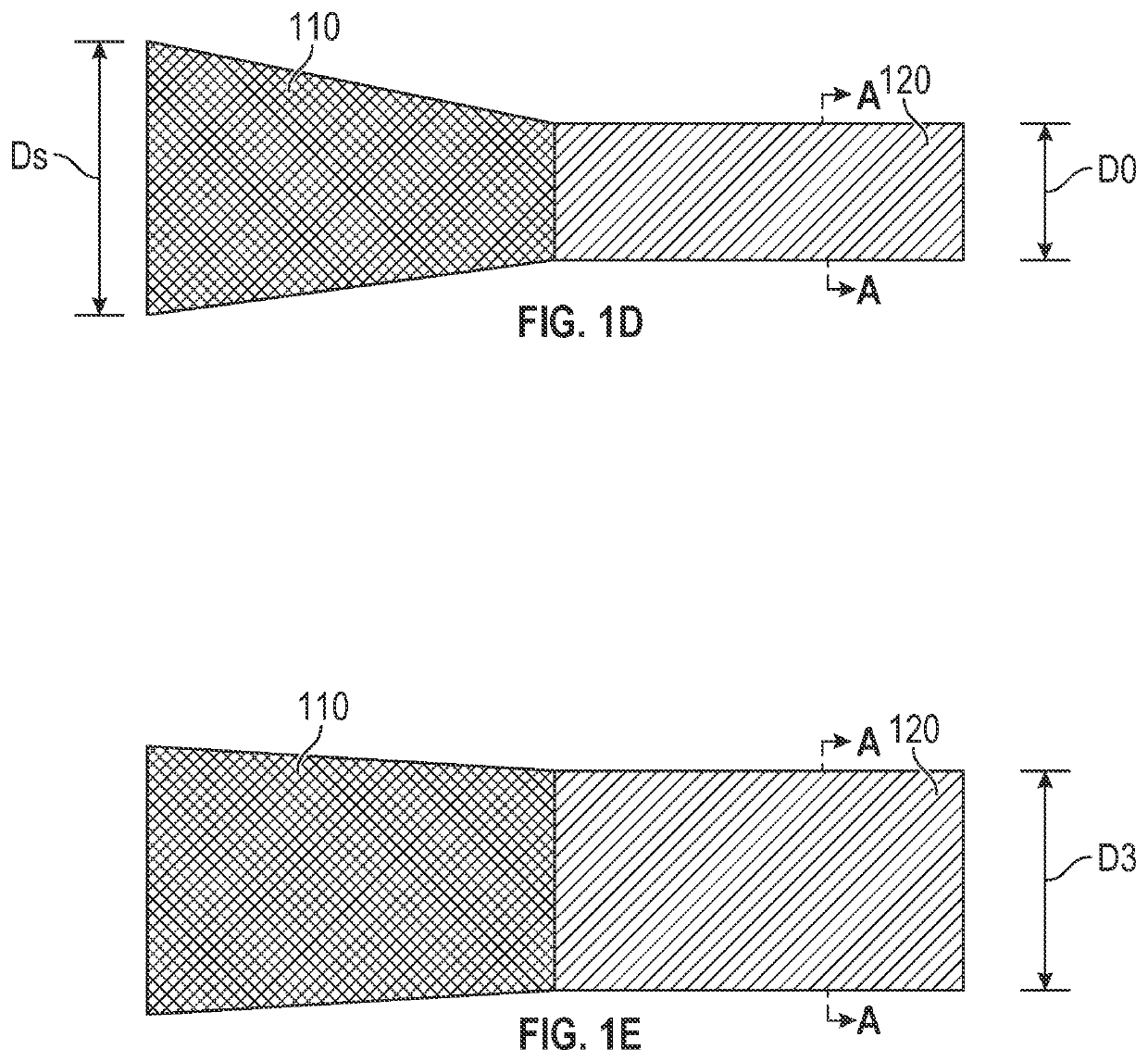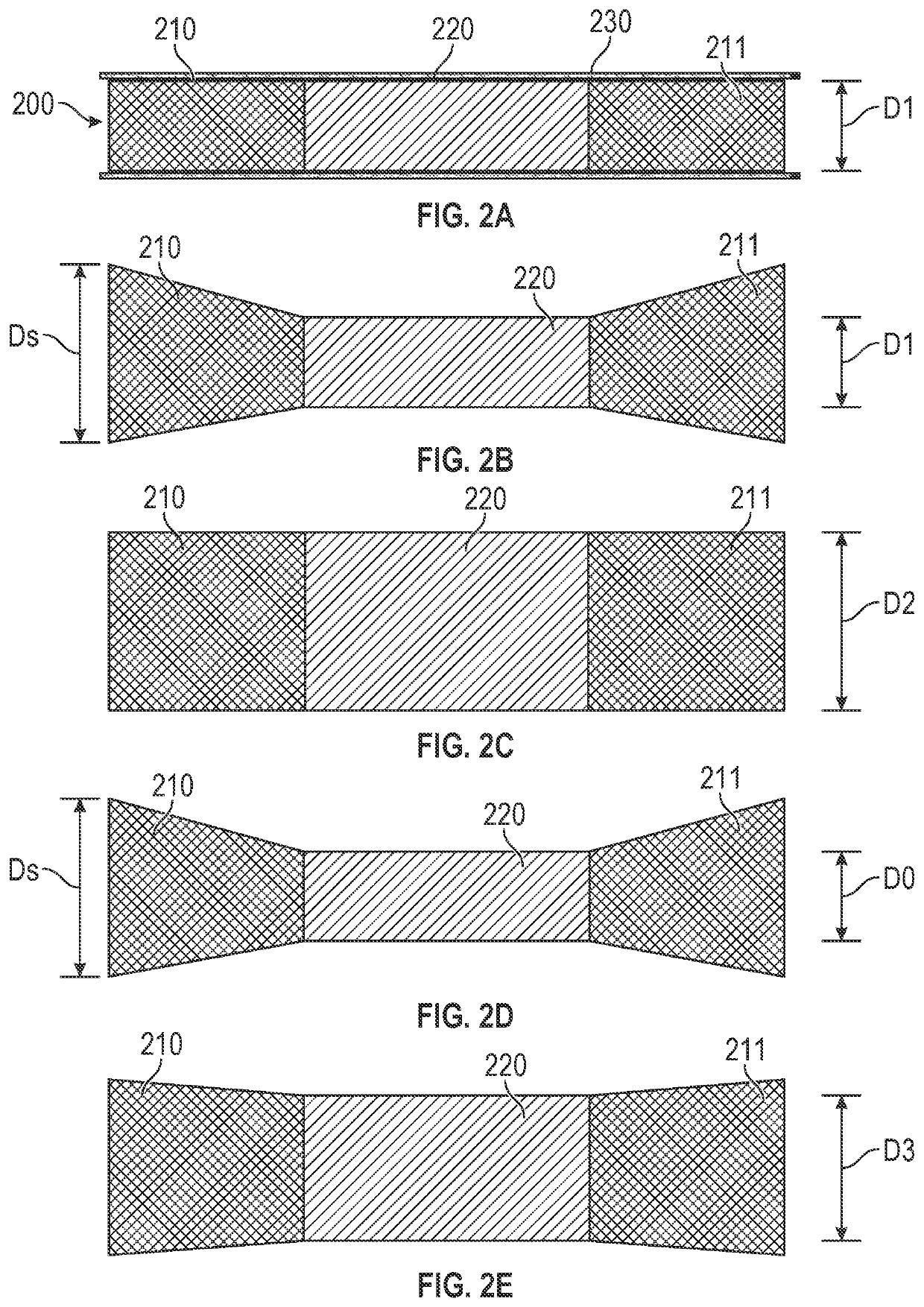Devices with dimensions that can be reduced and increased in vivo, and methods of making and using the same
a technology of dimensions and devices, applied in the field of human body devices, can solve the problems of pulmonary venous hypertension and lung edema, risk of hemolysis, thrombosis, infection,
- Summary
- Abstract
- Description
- Claims
- Application Information
AI Technical Summary
Benefits of technology
Problems solved by technology
Method used
Image
Examples
working example
[0179]The following example is intended to be purely illustrative, and not limiting of the present invention.
[0180]FIGS. 24A-24H are sequential images of a device prepared and used in accordance with examples provided herein. More specifically, the diabolo-shaped shunt frame device 700 described with reference to FIG. 7 was formed from NITINOL with an initial austenitic finish temperature below 20° C., so that it would be in austenitic superelastic phase at body temperature of 37° C. The superelastic device 700 was heat-set to the shape shown in FIG. 7, within a jig that formed a neck diameter of 4 mm. Subsequently, the shunt was changed from a purely self-expanding, superelastic austenitic phase to a configuration where at least some elements of the frame exhibited malleable shape-memory martensitic phase physical properties, with all dimensions, including the neck diameter, remaining the same, by re-heating the device to above 500° C. in an oven for a suitable duration. At the tim...
PUM
 Login to View More
Login to View More Abstract
Description
Claims
Application Information
 Login to View More
Login to View More - R&D
- Intellectual Property
- Life Sciences
- Materials
- Tech Scout
- Unparalleled Data Quality
- Higher Quality Content
- 60% Fewer Hallucinations
Browse by: Latest US Patents, China's latest patents, Technical Efficacy Thesaurus, Application Domain, Technology Topic, Popular Technical Reports.
© 2025 PatSnap. All rights reserved.Legal|Privacy policy|Modern Slavery Act Transparency Statement|Sitemap|About US| Contact US: help@patsnap.com



